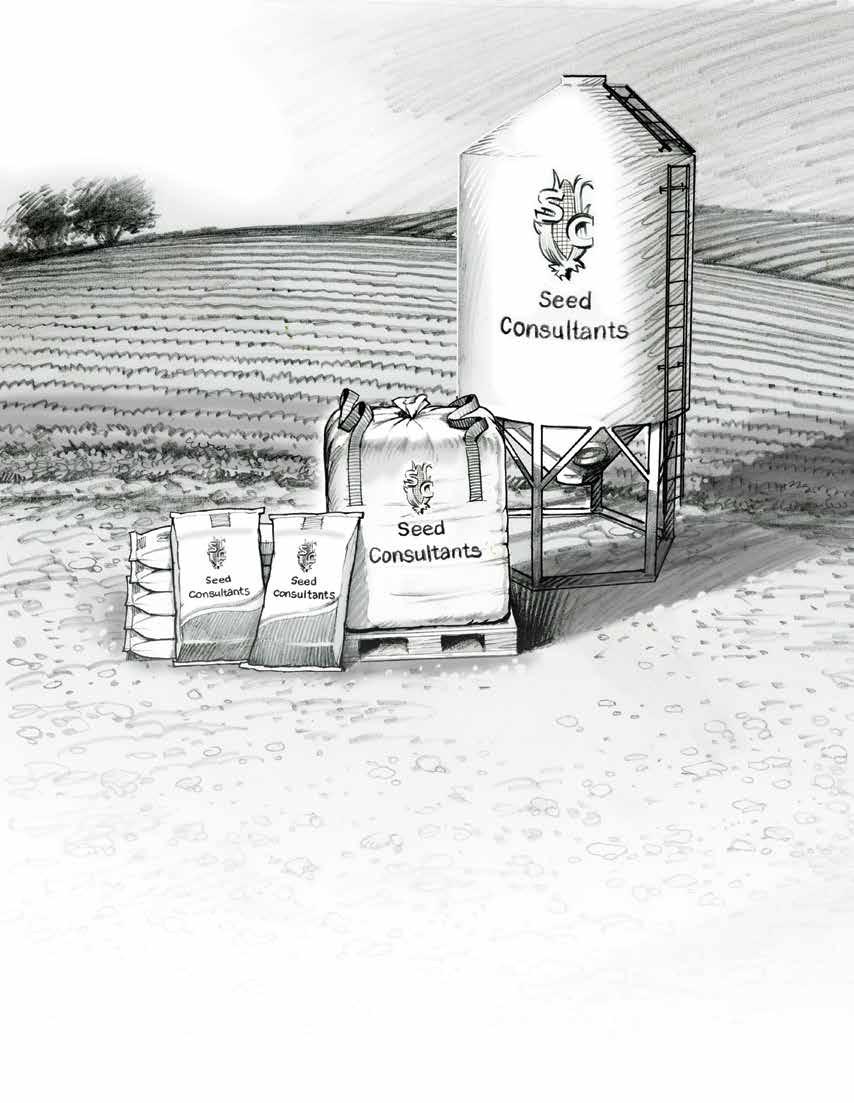
















There are plenty of look-alike seed treatments out there, but don’t let them fool you. With CruiserMaxx® Vibrance® Beans* you get the industry-leading combination of fungicides and insecticide. Nothing else protects your soybeans while boosting root health and yield with the same kind of power. To learn how that helps you win at harvest, talk with your local Syngenta retailer or visit SyngentaUS.com/CMVB.



See




Adam Graham
Ohio Soybean Association Chairman Logan County soybean farmer
As we roll into the winter months, the 2018 membership campaign of the Ohio Soybean Association (OSA) is underway! OSA is dedicated to improving the business climate for Ohio soybean farmers by promoting effective policies that ensure a growing and profitable soybean industry. OSA relies on its membership base to achieve this goal. THAT’S YOU! Soybean checkoff dollars cannot be used for lobbying and legislative activities, so OSA membership is vital to continued advocacy support.
For $205, a three-year membership includes the seed coupon (valued at $200), a chance to win 50 hours with a Challenger MT500 tractor, soy biodiesel coupons and more. In addition, membership to OSA includes automatic membership to the American Soybean Association (ASA) and access to their extensive benefits. Most importantly though, an OSA membership helps support legislative and lobbying efforts.
The Student & Young Adult Membership that was introduced last year will be continued in 2018. If you are not familiar with this program, student and young adult membership includes the same benefits as a regular three-year member and is available to any individual 18-24 years old. Do you know a young farmer interested in joining this free program? Tell them about it! You can find information at www.soyohio.org/membership.
As I write this column, OSA submitted a comment letter to the EPA on the 2018 and 2019 volumes for biomass-based diesel under the Renewable Fuel Standard (RFS). ASA has been covering the issue, and OSA is helping alongside by providing support. The EPA proposed it’s 2018-19 RFS volumes in early July, calling for biodiesel volumes of 2.1 billion gallons in 2019, and an Advanced Biofuels volume of 4.28 billion gallons for 2018. Those numbers reflect no increase for biodiesel, and a 40 million gallon decrease for Advanced Biofuels over the previous year.
In our comments to EPA, ASA and OSA called for an increase in the volumes for biomass-based diesel to at least 2.75 billion gallons for 2019 and in total Advanced Biofuels volumes to 5.25 billion gallons in 2018.
We would love your continued support on issues like the RFS. Visit the Soy Action Center at soygrowers.com for the latest update and your opportunity to submit comments on issues affecting your bottom line. As OSA ramps up its membership, we want to keep you informed and involved!
Sincerely,
Adam Graham
Ohio Soybean Association Chairman Logan County soybean farmer
President
Todd Hesterman, Henry County
First Vice President
Allen Armstrong, Clark County
Vice President
Scott Metzger, Ross County
Treasurer
Ryan Rhoades, Marion County
Secretary
Jennifer Wilson-Oechsle, Van Wert County
Chairman
Adam Graham, Logan County
trustees
Jerry Bambauer, Auglaize County
Bret Davis, Delaware County
Caitlyn Heimerl, Industry Affiliate Ex-Officio
James Heimerl, Licking County
Patrick Knouff, Shelby County
Cindy Parker, Miami County
Tommie Price, Putnam County
Derek Reusser, Holmes County
Ryan Rhoades, Marion County
Jeff Roehm, Highland County
Luke Ryan, Lucas County
Bruce Simmons, Medina County
Jeff Sollars, Fayette County
Andy Stickel, Wood County
Kerrick Wilson, Preble County
American Soybean Association
Board Representatives
Jerry Bambauer
Bret Davis
Jeff Sollars
Staff Credits
Kirk Merritt-Publisher
Jennifer Coleman-Editor
Katie Bauer-Contributing Editor/Staff Writer
Kayla Weaver-Contributing Writer
Donovan Harris-Design Director
Brent Warren-Senior Designer
Barry Falkner-Photo Quality/Proofer
Tony Green-Advertising Production
Ohio Soybean news is published six times a year by the Ohio Soybean Association, 918 Proprietors Rd., Suite A, Worthington, OH 43085. Phone: 614-476-3100. For address corrections contact Ohio Soybean News at 918 Proprietors Rd., Suite A, Worthington, OH 43085.
Web address: www.soyohio.org E-mail: cdeboard@soyohio.org
Comments and statewide news articles should be sent to the above address. Advertising space reservation must be made by the first of the month preceding publication. In consideration of the acceptance of advertisement, the agency and the advertiser must, in respect of the contents of the advertisement, indemnify and save the publisher harmless against any expense arising from claims or actions against the publisher because of the publication of the content of the advertisement.
For Advertising Sales Contact:
Matt Herman- (612) 812-5833
matt.herman@dtn.com
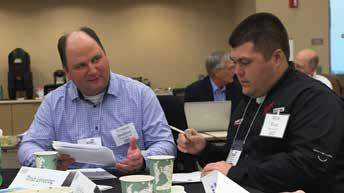
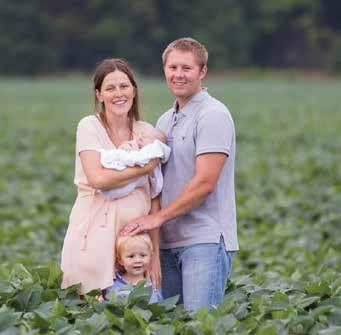
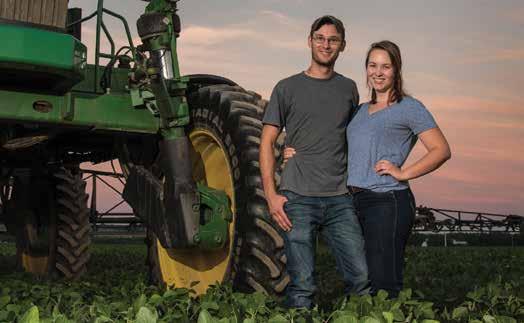
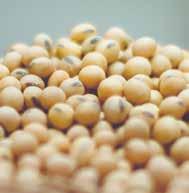
• Improve your leadership skills and help advance the soybean industry

• Learn to communicate and influence various groups on important agricultural issues
• Connect with soybean farmers from other states and Canada
The ASA DuPont Young Leader Program is a two-phase educational program for actively farming couples or individuals 21 years or older.
The two-phase training program is as follows:
Phase I – Tuesday, November 28 – Thursday, November 30, 2017 in Johnston, Iowa
Phase II – Sunday, February 25, 2018 – Wednesday, February 28, 2018 in Anaheim, California in conjunction with Commodity Classic
For more information about the ASA DuPont Young Leader Program and to apply for the class of 2018 go to: soygrowers.com/learn/young-leader-program
“This is an industry where very few people shoulder the responsibility of feeding so many, with that being said, we all have a responsibility to engage in the ways in which our time & talents allow. The
ASA DYL program has helped me on my journey of finding my role within agriculture as an advocate.”
– Monica McCollough, Missouri
▶ Water Quality & Nutrient Management
• The Ohio Soybean Association (OSA) strongly supports implementation of the 4R concept of nutrient management — Right Source, Right Rate, Right Time, Right Place. Properly managed fertilizers supporting cropping systems that provide economic, social, and environmental benefits
• Supports legislation based on scientific and research-based discoveries in order to create meaningful regulations
▶ State Funding
• Ohio Department of Higher Education: OSA supports full funding of the Ohio State University Extension and the Ohio State University Agricultural Research and Development Center, and the Sea Grant and Stone Laboratory at Lake Erie.
• Ohio Department of Natural Resources: OSA supports funding for the Clean Lake Erie Fund and continued funding to be utilized to offer feasible practices to reduce phosphorus in Lake Erie.
• Ohio Department of Agriculture: OSA supports the funding the Department needs to fulfill their required duties.
▶ Commodity Handlers Fund
• Supports maintaining a farmer funded program that “insures” the investment of agricultural products stored at a commercial licensed grain handling facility

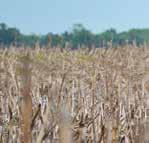


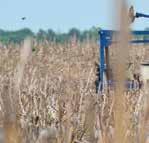
▶ Biobased Products & Biodiesel Use
• Supports and encourages the increased purchase and use of biobased products by state agencies
• Believes the biobased purchasing reporting requirements for the respective agencies of state government should be streamlined to minimize the “red-tape” necessary for state agencies to comply with the reporting requirements
• Supports the usage of biodiesel by state vehicles and heavy equipment and encourages the Ohio Legislature to explore the impact of a biodiesel requirement or incentives on all fuel sold in Ohio.
▶ transportation
• Supports timely and consistent inspections of bridges in rural areas, and adequate funding for bridge maintenance
• Believes higher truck weight limits should be implemented when technology shows that increased limits are appropriate due to modern equipment
• Supports resources allocated toward the upgrade of inland water systems and harbor management
▶ Jobs and economic Development

• Encourages the state of Ohio to develop funding specifically for attracting and promoting food and agricultural companies to Ohio u

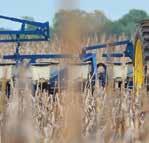
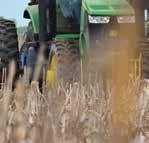

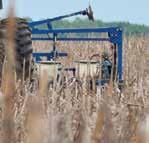





WHETHER YOU’RE PLANTING YOUR FIRST SOYBEAN CROP OR YOUR FIFTIETH, THE CHECKOFF WORKS FOR YOU.



Whether you’ve been planting soybeans for years, or you’re just starting out, the Ohio Soybean Council is investing in projects designed to help you maximize earnings on your farm now and for generations to come. From yield research to creating demand, your checkoff dollars are working hard for you. To learn about what the Ohio Soybean Council is doing for you, visit soyohio.org



















































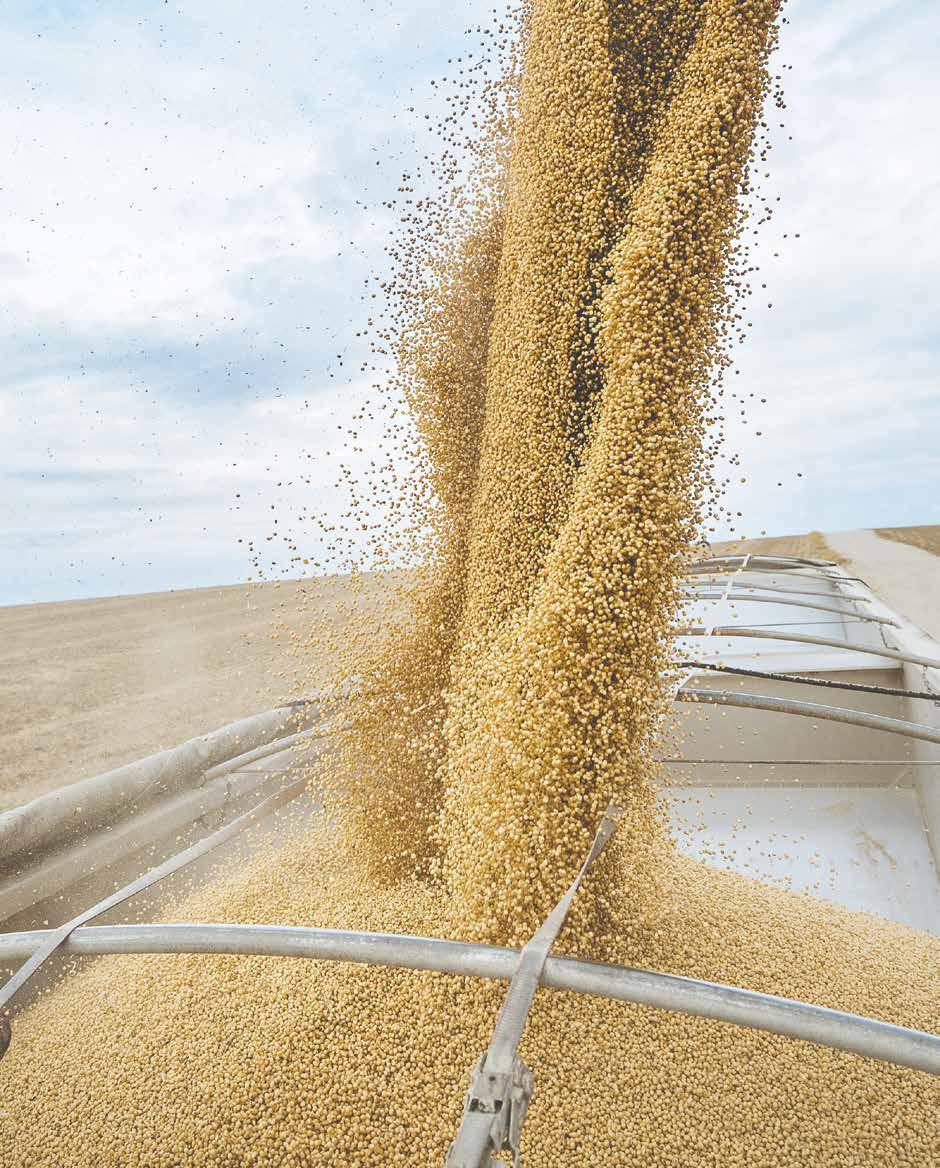
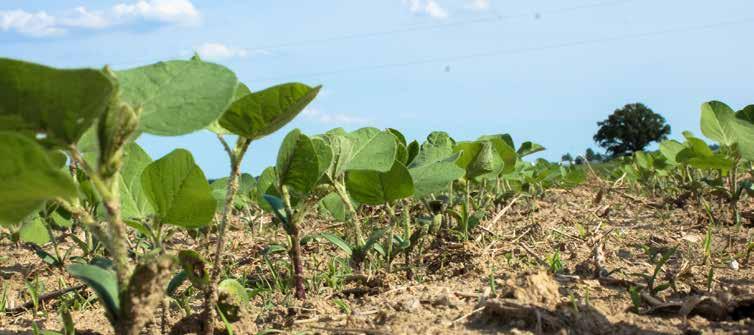

Student and Young Adult Members have all the same benefits as a regular three year member! For the next three years you can enjoy the benefits below just for being a student or young adult member of the Ohio Soybean Association.
2018 Membership Benefits
- Ohio Soybean Association Water Bottle
- Personalized Membership Card
- Subscription to Ohio’s Country Journal & The Progressive Farmer
- 6 issues of the Ohio Soybean News
- 10% discount on any new DTN/ The Progressive Farmer Ag Summit
When you join OSA, you also become a member of the American Soybean Association and enjoy additional benefits. Check out soygrowers.com for an update list and redemption instructions.
For a limited time, three year student or young adult memberships with the Ohio Soybean Association is of no cost to you. Membership is open to any individual ages 18-24.
OSA membership is vital to making the soybean industry in Ohio successful and profitable for years to come. Soybean checkoff dollars, managed by the Ohio Soybean Council, cannot be used for lobbying and legislative activities.
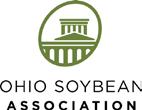


Promoting effective policies and legislation to ensure a growing and profitable soybean industry

Growing grassroots membership to represent soybean members at a state and federal level
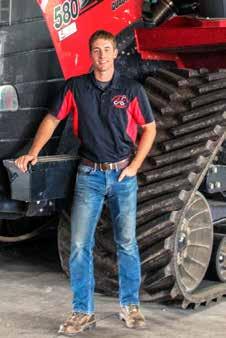



Providing leadership for Ohio’s soybean farmers

Taking action to make your voice heard with your local officials
*Name:_____________________________
Keep doing what you’re doing and someday somebody will notice.”
Those words, as Travis Bahan says, were once spoken to his father and have stuck with the farming operation over the years driving them to do their
best with every acre and treat all the fields as if they owned them.
The philosophy has proved to be true as several landowners have noticed the care they take and offered the opportunity to rent additional land.
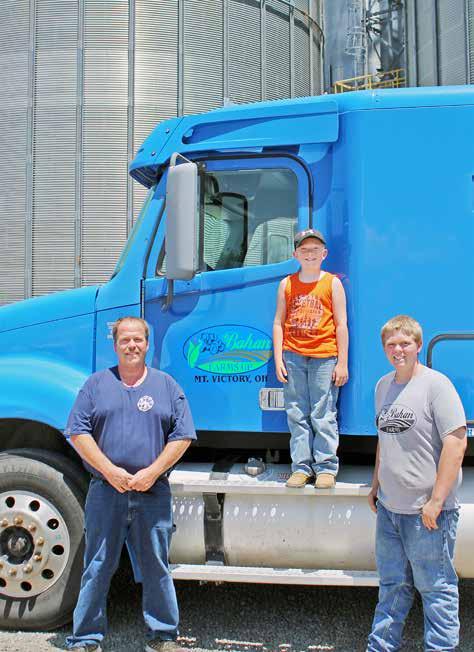
It’s also led Travis to be named as a quarterly honoree by the Beck’s Young Farm Leader program which strives to recognize farmers who are leaders in their communities and will drive the agriculture industry into the future.
“Travis shows respect for his neighbors and landowners by doing small things that help maintain great relationships and show that farmers care about the land and soil. Fostering relationships like these strengthen the public perception of agriculture and help others better understand the industry. We’re proud to honor farmers, like Travis, who serve as a face for agriculture in their communities,” said Bruce Kettler, Director of Public Relations at Beck’s Hybrids.
Bahan Farms was started on 80 acres by Travis’ father in 1971 and had grown to include 1100 owned and rented acres by the time Travis graduated high school in the early ’90s. Today, Travis and his wife Brittanie manage nearly 5000 acres with his father and stepmother, Gary and Barbara Bahan, maintaining their partnership in the operation.
With the increase in acres, the farm shifted its side business of custom harvest and spraying to tiling, drainage and excavation work as they are progressively replacing and adding tile on the land they farm. In addition, they invested in increased bin storage capacity to better market their grain.
“Our grain facility holds just under half a million bushels. My dad is pretty involved
travis Bahan (left) works hard to make sure the family farm is sustainable to hand down to the next generation which he hopes will include Kaden (center), Bradley (right) and the rest of his children who want to be involved.
with the marketing, we glean information from several marketing sources and work from there on our own strategy using hedging and contracts to get as far into the summer as possible,” said Travis.
The grain facility has also been an asset in Travis’ community involvement serving as the Assistant Fire Chief and EMS Chief for the SE Hardin NW Union Joint Fire District. Being a newly operational EMS division this year, Travis and a few fellow EMTs recently took a 240-hour training class to become Advanced EMTs and offer better emergency service to the rural area.
“We use the farm for training a few times a year. Heritage Cooperative donated a grain rescue tube to our department, so we use the grain facilities for training and train on the use of the dry hydrant installed at our pond,” said Travis. “We preach a lot of safety on this farm and my agriculture background has advantages when responding to some rural emergencies.”
In addition to working in public service, public perception of farming is important at Bahan Farms and Travis strives to be a notable example of the industry. He understands that when they rent land, they are often farming land that someone has farmed themselves or has been handed down in the family, so they mow the road ditches, spray next to property lines to keep things clean and sharp, and do the kinds of things that would have been done when the original owners farmed it.
“I take pride in farming and enjoy being able to take the brown dreary landscape and in the spring, turn it into something green and beautiful, take care
of it all summer and see the benefits in the fall,” said Travis. “I also enjoy getting to do something different every day and the flexibility of being able to be there for my kids when I need to — it makes a lot of the stress worth it.”
As the farm allows him to spend time with his five kids — Taylor, Bailey,
“I take pride in farming and enjoy being able to take the brown dreary landscape and in the spring, turn it into something green and beautiful, take care of it all summer and see the benefits in the fall.”
– travis Bahan
Bradley, Alexis and Kaden — he wants to make sure the farm is there for them, as some of his children as well as his nieces have an interest in continuing and growing the operation.
With that goal in mind, many of the farms practices focus on sustainability including no-till planting, strip banding fertilizer and utilizing GPS technology to be accurate and strategic with planting and any other applications. And by systematically tiling the fields, it allows water to filter through the soil instead of becoming surface runoff that has been the focus of many recent water quality issues.
“Water quality is a big topic; we need to police ourselves with good practices or we’re going to get regulations handed down to us,” said Travis. “We also need to be educating the public. Most folks today, especially millennials, are online and want to believe the information they find. We need to educate around these issues and provide accurate information.”
While he is hopeful for the future of agriculture and his kids someday taking the reins of the operation, Travis also recognizes these are challenging times for agriculture.
“It’s hard to make money in this environment. Farm inflation hit us like a brick wall, but no one cared when grain prices were high because it was easy to make money, then prices slammed back to reality and while inputs have come down some, the price of land and property taxes went through the roof. Cash rents remain high because property taxes haven’t come down, and many seniors who own land depend on those payments covering the taxes because they are on fixed incomes. It makes our margins very thin,” said Travis.
“Travis is passionate about agriculture and making sure the next generation has the same opportunities,” said Adam Graham, OSA chairman and soybean farmer from Logan County. “He is conscientious about their farming practices and using resources wisely to protect the land while working to achieve a profit on tight margins. We are happy to recognize Travis as a Beck’s Young Farm Leader and encourage others to apply for the program as well.” u

Provided by the American Seed Trade Association (ASTA)
No matter what type of seed you buy, it’s important to know exactly what you’re getting. There’s a lot more to buying seed than meets the eye. Quality seed has been bred for specific traits, such as geographic adaptation, disease or insect resistance, physical attributes, or plant function. It has been selected, harvested, cleaned, analyzed, tested, processed, packaged and shipped. Professional seed producers with years of knowledge and expertise have the infrastructure and know-how to ensure you have the best seed to address your specific challenges and concerns.
In addition to the many steps involved in seed production, state and national regulations provide a system of checks and balances to ensure you get your expected product. These laws require accurate labeling and purity standards for seeds in commerce, and prohibit the importation and movement of adulterated or misbranded seeds. All 50 states have seed laws that govern the intrastate movement and sale of seed. These laws are basically “truth-in-labeling” laws designed to provide consumers with important information relating to product quality and identity.
Interstate commerce of seed involves the Federal Seed Act, acting in coordination with the state seed laws. Created in 1939, the Act was designed to require accurate labeling and purity standards for seeds in commerce. In addition, the law works in conjunction with the Plant Protection Act of 2000 to authorize the Animal and Plant Health Inspection Service (APHIS) to regulate the importation of field crop, pasture and forage, or vegetable seed that may contain noxious weed seeds. USDA’s Agricultural Marketing Service is responsible for enforcing the labeling and purity standard provisions to promote uniformity among state laws and fair competition within the
seed trade. Seed companies spend a lot of time and effort to ensure compliance with these individual state laws, which can be difficult since most seed is sold across state lines.
As you can imagine, 50 state seed laws and a federal seed law can make trade fairly complicated. So, in 1946, the Association of American Seed Control Officials created the Recommended Uniform State Seed Law, often referred to as “RUSSL.” That document serves as a model law for the states and is reviewed and updated regularly. While RUSSL is technically a guideline, rather than a law, it serves as a general reference point for states when seed law changes occur.
State seed laws generally include provisions for labeling the kind, variety, purity, germination, date of test, and other information of value to the grower. Some states have included regulations for flower, herb, tree, and shrub seed, in addition to those for agricultural and vegetable seed. It is always important to know the differences in state laws, as requirements vary from state to state. Your seed supplier can help you understand the laws in your state.
Ensuring a consumer’s seed is free of noxious weeds is a critical concern for all seed companies. It is important to understand the difference between state noxious weed laws, and state noxious seed laws. Both laws are designed to limit the spread of both noxious weeds and seeds. Noxious weed laws identify plants that have been determined to be injurious to crops, ecosystems, habitats, livestock or humans. Noxious weed laws require landowners to control or eradicate noxious weeds growing on their property. Noxious seed laws are designed to identify specific seeds of the same, and prevent spread of these plants as the farmer or landowner plants their crop, pasture, lawn, or wildlife plot. Often they
are different within a state because the some plants may be considered noxious but aren’t likely to be founds in purchased seed. Conversely, some weed seeds may be listed as noxious seeds because that could be the primary method of spread. In preparing seed for sale, seed producers generally pay a laboratory to conduct an “all states” noxious weed identification test for their products so that they may distribute seeds between states.
Probably the most important tool in the enforcement of the state and federal seed laws is the lab test. Seed tests by the regulatory seed labs—which are often independent of the office of the state seed control officials—use statistical sampling methods to verify the seeds’ germination and purity. If an issue is found by seed control officials, the company will be required to recall that lot and correct the issue. However, typically problems are discovered through internal, proactive testing processes within a seed company and the products don’t go to market. You can be assured a seed company will do all they can to ensure a quality product; errors are costly, and grower confidence is of utmost importance.
Here’s the bottom line: State and federal seed laws are in place for the benefit of the grower and the producer. It is imperative that consumers get the quality and type of seed they desire, and that the seed will grow and produce their expected result. Seed production is complicated and requires extensive education and experience. Professional seed producers have committed a significant investment in personnel, equipment, research and testing to ensure the highest quality seed for growers. Whether it’s for your agricultural production, conservation planting, or backyard gardening, it pays to know that the seed you purchase is exactly what you desire — and state and federal seed laws are in place to assist. u




Ohio soybean farmers consistently rank state and federal regulation as their top concern.
The Ohio Soybean Association (OSA) provides leadership for Ohio’s soybean farmers in promoting effective policies and legislation. OSA represents its members at both the state and federal levels, and works cooperatively with its national affiliate, the American Soybean Association. Soybean checkoff dollars cannot be used for lobbying and legislative activities. That’s why your OSA membership is vital to making the soybean industry in Ohio successful and profitable for years to come.






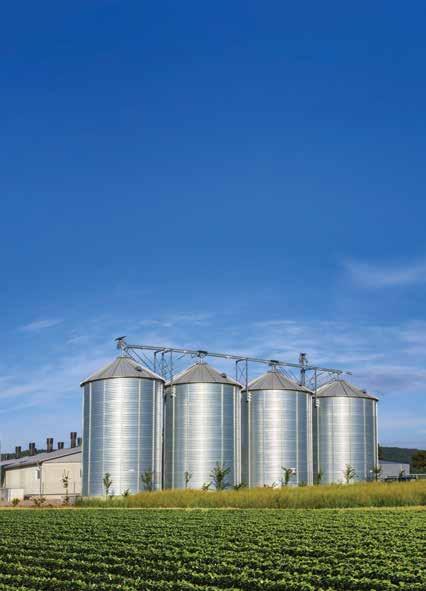
The Ohio Soybean Council was founded in 1991 to manage the Soybean Research and Promotion Program, commonly referred to as the soybean checkoff. Soybean farmers pay one half of one percent of the bushel price to the soybean checkoff when they sell soybeans. Half is sent to the United Soybean Board and half is invested right here in Ohio in soybean production research, marketing and promotion, new product development and education to maximize profit opportunities for soybean farmers.
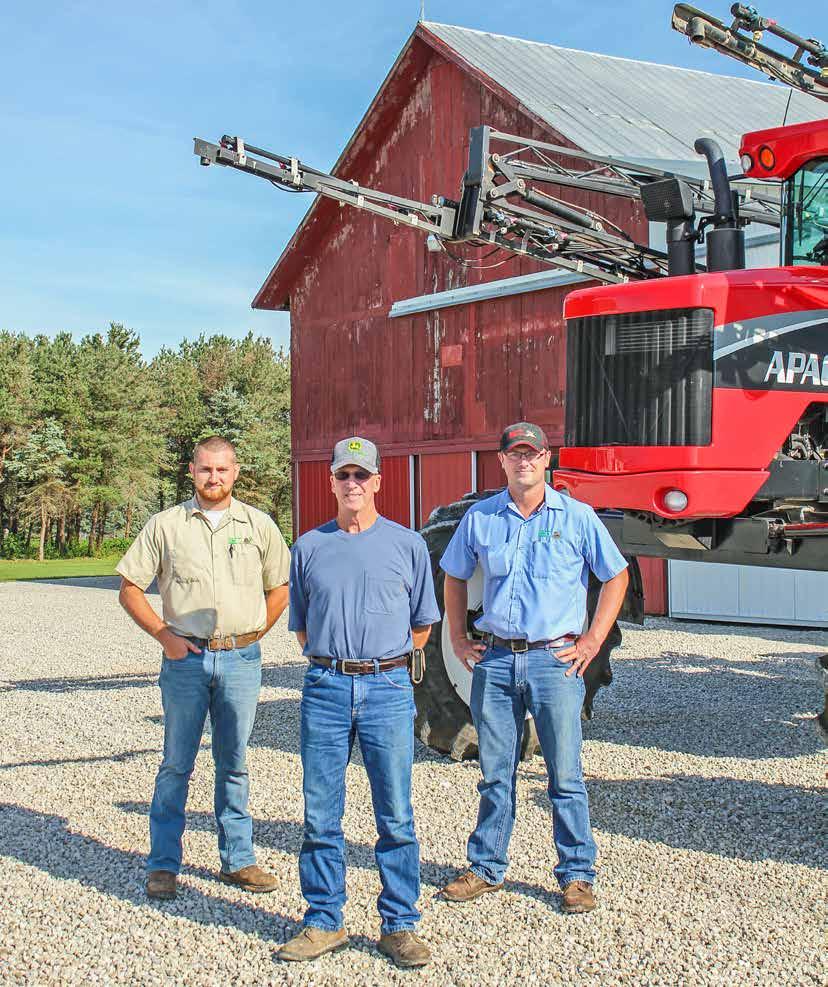
Dave Neidhart Sr. is the fifth generation of his family to farm the land near Marion, Ohio. He grew up farming with his dad, and then took a job at the local Whirlpool factory. He recalls mortgaging rental properties in 1976 when he and his wife purchased their first farm for $2,000 an acre — having to borrow equipment to farm it the first year.
“I used my dad’s tractor to plant, one of my friends combined, then we hauled it to town. Beans were $8.01 a bushel and that was the only year that farm made its own payment,” said Dave Sr. “We had to subsidize it the rest of the time; that made me leery about paying too much for land. It took everything we had to make those payments.”
In 1980, Dave Sr. quit his job to pursue farming full time with his brother. They purchased a piece of land for $1,000 an acre in 1988 — the same year the area was hit with drought.
“When we were looking at the property, we climbed on a brush pile and ducks flew out — it was wet. First thing we did was clear those piles and ditch it,” said Dave Sr. “With the drought that year, borrowing money, and being young with two small children, I thought we were never going to get out of debt.”
Keeping their dad’s farm in the family put another financial burden on the brothers with Dave Sr. recalling loan interest rates of 14% with a potential $400 per day late fee.
“We were building garages, hauling dirt and stone, just working day and night; and we made it, but it was hard. It’s been a long haul,” said Dave Sr. “In the ’80s we lost money two years in a row and we came close on our loans, but we made it through.”
While Dave Sr. and his brother pulled through and farmed together until 2009, many area farmers weren’t as lucky. With low commodity prices and high interest rates, he recalls some farmers going bankrupt.
“Friends and neighbors would hide equipment, guys were just trying to survive. They needed seed, we’d get them a load out of our grain bin just so they could plant,” said Dave Sr. “I preach to
these young guys about high land prices because it scares me. I’ve spent too many nights lying awake trying to figure out how I was going to make my payments.”
The Next Generation
Dave Neidhart Jr. has learned from his father’s farming experience and recently began his own journey. After attending The Ohio State University, he returned to Marion and took a job at NuCore Steel while continuing to farm with his dad and purchasing his first piece of ground in 2012.
“My wife and I own a small farm that is actually adjacent to the first farm my dad bought, I can see the house they lived in from my window. I got it right before land prices went high, and paid $2,700
“every kid has a dream and I wanted to drive a tractor, and drive a combine, those were my goals and these guys gave me the opportunity.”
– Willie Ware
an acre with an additional investment to clear five or six acres,” said Dave Jr. “Dad worried it was too much, but interest rates were low and at the same time corn was $7.50 and soybeans were $16. It was hard to make a mistake those years.”
Following tradition, before they even closed on the property they began clearing trees and fence rows and started ditching.
“The thought process my dad has instilled is if you’re going to farm it, maximize every square inch from year one. We try to be as proactive as possible, and now it’s a nice field, not quite like the home place, but we haven’t had it as long,” said Dave Jr. “I hope in another 28 years maybe my son will say we took care of this farm the way it should have been.”
After years of balancing a job and farming, Dave Jr. took a leap of faith, bought a business and quit his job.
“In May of last year, my wife and I purchased a local stump removal business from a gentleman who was retiring. Between the business and farming, I could quit my job and know we’d be okay,” said Dave Jr.
Also helping with the stump removal business is Willie Ware, a familiar face around the Neidhart’s farm. He might not be blood relation, but in the eight years he’s worked there he’s become part of their family. Growing up in Marion with no farm experience, he started out around age 14 picking up rocks and has picked up quite a few skills over the years.
“I started as a rock picker, then washing equipment, taking out fence rows, helping with ditching — I started from the bottom and worked my tail off and earned their trust,” said Willie. “Every kid has a dream and I wanted to drive a tractor, and drive a combine, those were my goals and these guys gave me the opportunity.”
Willie adapted quickly to farm life and is hoping to purchase land of his own one day soon.
“Willie is truly a first-generation farmer, but after eight years he’s running the planter, sprayer and combine — he can do anything. I’m looking forward to being in partnership with Willie on the farm,” said Dave Jr.
Looking back, both generations have seen many changes, from seed genetics to precision technology and price fluctuation in every area.
“The biggest change for me is the seed, genetics are so much better now. We used to save all our seed and it was our smallest input; now it’s right up there with fertilizer,” said Dave Sr.
Dave Sr. also remembers the days of open cab tractors and mold board plows while he marvels at the capabilities of precision agriculture they have added to the operation. Dave Jr. remembers getting started on an open cab tractor and appreciates all the added features and technology capabilities of today’s tractors. →
“The amazing things we can do with precision technology now takes some stress out of running these machines. If you’re harvesting soybeans or wheat you’re constantly looking for rocks and trying to watch everything. Some people think auto-steer makes you lazy, but I think it makes you a better operator. You’re more aware of your surroundings and do a better job adjusting your machine. Precision and efficiency has changed things for our generation,” said Dave Jr.
When it comes to prices, both generations have seen record high commodity prices and downward trends in the last decade with higher inputs all around as well as increased cash rent and land taxes.
“Farming is cyclical, but the markets change so fast now because it’s no longer just the United States affecting grain markets, it’s a global marketplace our outdated cycles and pricing schedules can’t keep up with,” said Dave Jr. “We’re seeing the perfect storm right now; grain prices are the lowest in the last 10 years and our inputs haven’t really gone down.”
When Dave Sr. first started out, things were pretty tied to the local market. Over the years he has ventured in and out of some niche markets including low-linoleic and non-GMO soybeans, but they are currently back to the basics contracting conventional beans.
With the current farming outlook, there is likely going to be ground becoming available where farmers are paying too much for cash rent, can’t afford to farm marginal ground anymore or are getting out for other reasons.
“I don’t know what it’s going to take to get things down to where they should be, nobody knows,” said Dave Jr. “I think if we continue to see those lower commodity prices, it’s depressing, but at the same time for guys like Willie and myself it’s exciting, because there’s going to be some ground changing hands and if you’re hungry enough and have the drive, you’ll get the chance. It can’t stay this low forever, things have to balance out.”
Building on the traditions Dave Sr. has instilled, Dave Jr. and Willie make a conscious effort to make sure every acre is cared for like their own and build those relationships that will continue their success.
“Willie and myself, we’re looking at being in the driver’s seat. There are so many farmers out there in dad’s position, they’re getting older, prices are lower and farming’s not as fun,” said Dave Jr. “As they’re thinking of retirement, our best bet is to do the very best we can, continue to develop relationships and hope it pays off with future opportunities to rent ground or have a shot to buy it.”
David Sr. is excited to be able to pass down his part of the operation to the next generation on the farm and thankful the boys have the stump removal to fall back on in the lean years when farming’s not enough.
“I’m just so glad I don’t have to have a sale on a Saturday and have everything I worked for be gone in one day, that is no way to end up,” said Dave Sr. u
Amajor goal of the Ohio Soybean Council (OSC) and soybean checkoff is to transfer knowledge with a key part of that goal being to educate the next generation about modern agriculture. Efforts to achieve this goal include many diverse programs, key partnerships and a variety of forms of education.
One tremendously successful part of those efforts is GrowNextGen — a program that strives to be a top resource for teachers and helps them connect students to career fields in agriculture through classroom curriculum and trusted connections. Programming from GrowNextGen includes curriculum, hands-on events and workshops for teachers, educational games for students
and numerous opportunities for classroom teachers to connect with industry leaders and expand their view of the agriculture industry.
Recently, OSC’s GrowNextGen program was recognized by the Ohio Association of Agricultural Educators (OAAE) with their Outstanding Cooperation Award at their annual meeting in Columbus.
“OAAE is excited to recognize GrowNextGen for their dedication to serving the needs of educators. There
tom Fontana, oSC Director of research and e ducation is shown with Stephanie Jolliff, past president of oAAe, who nominated GrowNextGen to receive the award.
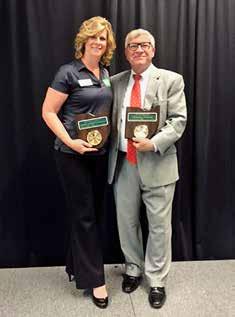
is a necessity in today’s classroom for accurate, rigorous curriculum related to agriculture. Educators appreciate unbiased, reliable, cutting edge resources that meet the needs of America’s flourishing ag industry. GrowNextGen is responsive to teachers’ curriculum requests and truly cares about advancing young people’s educational experiences with meaningful work. We are proud to honor GrowNextGen with the 2017 OAAE Outstanding Cooperation Award,” said Stephanie Jolliff, OAAE Award Committee Chair and Past President, who nominated OSC for the award.
GrowNextGen is facilitated through the cooperation of teachers, industry experts and passionate staff at Educational Projects and Partnerships and made possible by Ohio Soybean Farmers.
“We are excited to have GrowNextGen recognized by the OAAE. Since its launch in 2013, GrowNextGen has blossomed into a movement that has teachers and students thinking about agriculture beyond what they may see or hear online or in the news. In expanding their knowledge and understanding of agriculture, we’re not only opening career opportunities, but giving them the opportunity to form their own opinions about the industry,” said Tom Fontana, Director, Research and Education, Ohio Soybean Council.
In addition to being recognized for existing educational programs, OSC has received a grant to go toward the creation of new educational programming and training for pre-service agricultural teachers called “Exploring Modern Farming.” The goal of the program is to
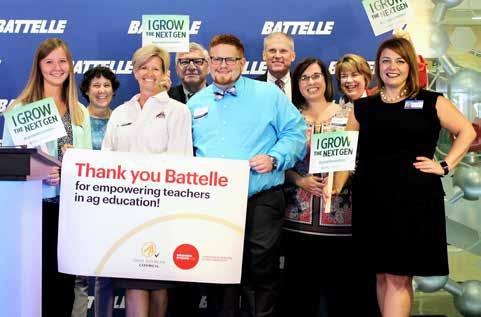
35 pre-service teachers from three Ohio agricultural colleges to implement informal summer programs such as STEM camps and activities for fairgoers at the Ohio State Fair with hopes of reaching more than 8000 participants.
The $35,000 grant was awarded to the Ohio Soybean Council Foundation as part of the Battelle STEM Grant Program which is in its fifth round of awards. Battelle’s STEM grants focus on integrated, out-of-classroom opportunities with real world application to help every child have an engaging educational experience.
Exploring Modern Farming will cover four topic areas. First, participants will build models to understand chemical bonding related to biodiesel and candy to understand genetic modification. Second, participants will study thermal light photography and will create and operate a paper airplane
Launched in late 2013, GrowNextGen has reached more than 20,000 teachers and 500,000 students. This movement, which was designed to bring agriculture science to the classroom, joins industry and teachers by cultivating real-world educational tools to engage the next generation workforce. Backed by funding from the ohio Soybean Council and ohio soybean farmers, GrowNextGen focuses on modern agriculture education exposing students to different career fields in a thriving industry.
drone using a smartphone to control flight, showing how technology can help farmers make decisions about fertilizer and pesticide needs. Third, participants will learn the process of making, then testing soy biodiesel fuel in tin boats. Finally, using Scratch programming and MakeBlock components, students will experiment with programming and computational thinking.
“We are very appreciative to have the OSC Foundation selected as a grant recipient. Exploring Modern Farming will allow pre-service teachers to gain valuable skills and resources that will make them better classroom teachers while giving students the opportunity to participate in hands-on learning that will engage them more in the agricultural industry and opportunities for their future,” said Bill Bateson, OSC board member and soybean farmer from Hancock County. u





Ohio Soybean Council (OSC)
Board members are passionate about agriculture and dedicated to making wise decisions to lead the work of the soybean checkoff program. With the ever-changing landscape of the agriculture industry that means taking time to focus on the future and seek out the latest trends and issues.
To keep up to date, board members, industry leaders and other key stakeholders take part in Ohio Soy Tomorrow — a program to create opportunities for members from all parts of the value chain to collaborate and share ideas while working together for the future of the industry. The program seeks to give a voice to those at every level as soybeans journey from farm to customer.
The basis of Ohio Soy Tomorrow is not a new one; OSC had a similar program, Ohio Soy 2020, started in the early 2000s that was focused on success for the industry by 2020. As the years closed in on that future date, the program was revamped, improved, and renamed as Ohio Soy Tomorrow to represent a continual focus on the future.
Small group meetings between significant industry stakeholders and
a select number of board members are a key component of the program’s collaboration efforts to hear from experts like plant researchers to determine what the board needs to be focused on next. The small group format allows board members to keep a pulse on the industry and make sure they are investing check-off dollars where they will be most beneficial.
Not only do the meetings empower board members with the knowledge to make better decisions, but they also serve as a way for industry stakeholders to keep in mind that the checkoff program is investing in areas that are important to all parts of the industry.
Additionally, webinars have been hosted over earlier this year with topics including the global protein outlook and trade and logistics, leading up to a larger meeting in August focused on trade policy. The annual event typically brings
together more than 100 representatives who have a stake in the area like last year’s focus on the next generation. A state of the industry report is also made available to those who are interested in updates and ongoing industry trends.
Board members have enjoyed participating in the program and keeping a fresh perspective on the many continuously changing aspects of the soybean industry and agriculture in general. Ohio Soy Tomorrow provides a constant reminder that the board is looking to the future and trying to be proactive to the challenges that lie ahead.
Those interested in learning more can check out the resources available at OSC’s website, soyohio.org, where they can check out the DTN news feed, find future webinar opportunities, read newsletters and find out what people are saying about agriculture through online listening trend reports. u

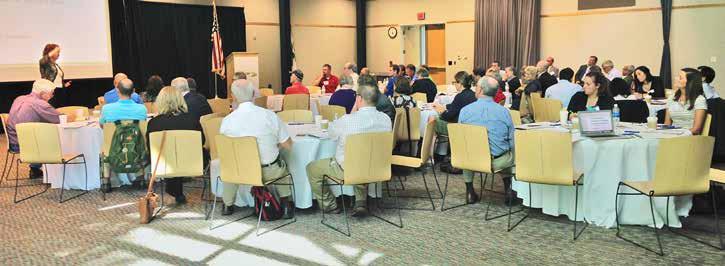
In an effort to save energy costs, some Ohio farmers have converted their climate controlled livestock barns and grain drying systems to natural gas. Realizing the need for more readily available information on the process, the Ohio Soybean Council (OSC) and soybean checkoff initiated a project with Energetic Inc to consolidate conversion related information such as methods used and associated cost based on the farm’s distance from the nearest natural gas source.
With the first piece of data collection and research complete, OSC handed things over to The Ohio State University (OSU) Extension to continue evaluations on feasibility and facilitate outreach events to get the information to farmers. "OSU seemed like a perfect fit to disseminate the research OSC had initiated through OSU's existing state-wide outreach program," said Terry McClure, OSC Chairman and soybean farmer from Paulding County.
Surveys revealed information on concerns, energy prices, number of farms that have completed the conversion from propane to natural gas and the number of
NG Conversion options: Sample calculations are available for each conversion option, whether simply tapping into existing service or making the connection to a high pressure tap with cost and payback time varying between the options.
farms that were interested in the process. Additional information was collected on their awareness of infrastructure, such as the nearest connection point and who to contact to start the process. From the surveys, 11 farms were surfaced to do face to face interviews.
“We wanted to make sure we provided more than just the payback calculation,” said Eric Romich, Extension Field Specialist in Energy Education. “Our primary focus was combining information from farms that have been through this and identifying challenges.”
The project results include a worksheet — where farmers can plug in parameters related to usage, cost, energy prices and receive a simple calculation of how long it would take for the conversion to payback — and an additional summary of the conversion factors to consider.
“From the interviews, we’ve been able to summarize and describe lessons learned that are non-economic but other factors that should be considered,” said Romich. “One of the bigger issues we came across was having adequate capacity and pressure in the lines during drying season, if it runs low dryers can shut down.”
Another component available is a technical report focusing on natural gas and propane trends and historical data. It’s become apparent most farmers that installed natural gas did so from 2011–2013 when propane was the highest and the payback was relatively quick.
“We can’t predict the future, energy markets are changing, it made sense in 2011, but does it make sense in the world we live in now? That’s what we’re hoping this information helps farmers determine for themselves,” said Romich.
Please visit https://energizeohio. osu.edu/farm-energy-management/ evaluating-natural-gas-utilizationagriculture for the natural gas worksheet payback calculator, lessons learned and energy trends.
There are currently 15 or more outreach sessions being scheduled in addition to information being rolled out at Extension’s Energy Tent at the Farm Science Review with a special session titled Switching Energy Source to Natural Gas: Lessons Learned being held on Tuesday, September 19th at 2:00 p.m. If you have any questions, please contact Barry McGraw at bmcgraw@soyohio.org u

New claim adds advantage for U.S. soybean farmers with food industry
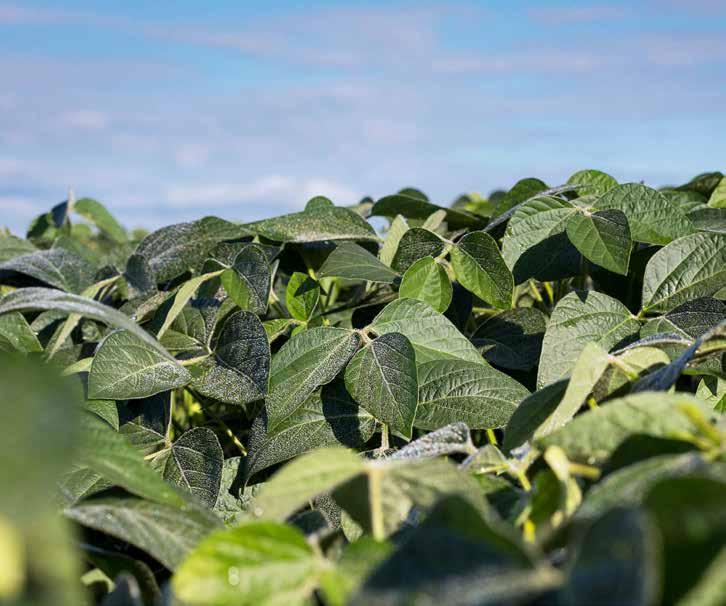
Soybean oil can be part of a healthy diet. Now soybean farmers — and food manufacturers alike — can proudly tout its heart-health benefits. Thanks to a petition for a qualified health claim just authorized by the U.S. Food and Drug Association (FDA), soybean oil — and products containing soybean oil — can use a heart-health claim on packaging, menus and more. The claim is similar to those associated with canola and olive oil and states that eating 1.5 tablespoons of soybean oil daily may reduce the risk of coronary heart disease when replacing saturated fat and not increasing calories. The FDA announced this week that it had no objections to the claim for foods that
qualify. The application for the claim was submitted by Bunge, one of the leading soybean processors in the country.
“The food industry is by far our largest customer for soybean oil and by submitting this claim Bunge is really looking out for soybean farmers and our long-term profitability,” says John Motter, United Soybean Board chairman and soybean farmer from Jenera, Ohio. “This claim really helps U.S. soybean farmers maintain their competitiveness in this critical market and helps us compete with other oils that have become synonymous with heart health.”
The American Heart Association recently went on record regarding the cardiovascular benefits of the fats
found in soybean oil.
“We conclude strongly that lowering intake of saturated fat and replacing it with unsaturated fats, especially polyunsaturated fats, like those found in soybean oil, will lower the incidence of cardiovascular disease,” said Penny M. Kris-Etherton, co-author of “Dietary Fats and Cardiovascular Disease, A Presidential Advisory from the American Heart Association” published in June, 2017.
These positive movements for soybean oil will help in U.S. markets primarily, but the checkoff will use the claim to position U.S. soy in international markets where health-conscious decisions are also being made. u
Animal agriculture has long been the largest customer for American soybeans, typically that would account for the more traditional poultry, swine and beef production. In recent years aquaculture is becoming a bigger part of the equation; and the Ohio Soybean Council (OSC) and soybean checkoff took notice and in cooperation with Battelle developed EnzoMealTM — an improved soybean meal with antinutritional factors removed and increased protein, making it an excellent replacement for fishmeal in aquaculture feeding.
According to lead researcher Vikas Kumar, assistant professor of aquaculture at Kentucky State University, currently aquaculture consumes about 45 million metric tons (mmt) of feed. Utilizing almost 70% of total fish meal production, the industry is growing at such a rate that would put extreme demand on the ocean’s resources and alternatives are needed.
With the improved nutrition of EnzomealTM, Kumar and his partners have completed several studies to determine higher inclusion rates that would ease global demand and bring down costs.
“The problem for soybean meal is the carbohydrate content, aquatic animals do not like carbs above 20 percent,” said Kumar. “EnzomealTM utilizes technology to remove antinutritional factors
considered the best sea food in industry making up approximately 27 percent of the aquaculture industry — found that EnzomealTM could replace 100 percent of the fishmeal and still see the same rate of growth.
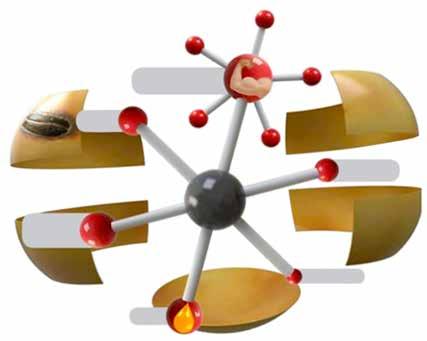
Currently, soybean meal is the one of the most commonly used alternative protein sources in aquafeed, although some aquatic diets are restricted to 2030% inclusion of soybean meal due to substances that interfere with digestion, referred to as Anti-Nutritional Factors (ANF). EnzoMeal TM removes many ANF, such as trypsin inhibitors, lectin and oligosaccharides (100% removed), phytic acid (78% decreased) and also decreases total carbohydrate content (31%) and enhances the protein content (22%) without compromising the amino acid composition.
treatment removes hard to digest carbs from soybean meal by non-fermentation process which is more economical.
and almost 50% of carbohydrate from soybean meal. Once those are removed protein content increases by 22% in EnzomealTM.”
Studies Kumar has worked on have been successful in replacing 50 percent of fishmeal with EnzomealTM in feed for yellow perch without compromising growth and health. Another large-scale study with saltwater shrimp — which is
While soybean meal and in turn EnzomealTM was likely to have success in omnivorous fish, carnivorous fish such as Atlantic salmon, trout and largemouth bass prefer animal protein and do not like high carb content feed like soybean meal. However, a largemouth bass study done in pond conditions showed fish growing from 50-300 grams in 4–5 months with EnzomealTM replacing up to 80 percent of fish meal. Kumar also reports a graduate student teamed up with Norwegian based research company, Nofima — a leading researcher of aquaculture and a pioneer in the industry — where studies showed EnzomealTM performing much better than soybean meal for Atlantic salmon.
In addition, a 2017–2018 study, from Kentucky State University in collaboration with University of Idaho is focused on rainbow trout and saltwater shrimp. Both are largely popular seafood items and the study aims to find the most costeffective feed formulation that provides optimal growth and performance.
Ongoing studies will also look at more detailed nutritional factors to improve and refine EnzomealTM, but overall results show promising results for increased use in the expanding aquaculture industry. u
Soy Stats 2016
HARVESTED 4,840,000 acres
RANKED 6TH BEST YIELD PER ACRE OF SOYBEANS IN THE NATION, 2.4 bushels above the national average of 52.1 6TH
PRODUCED MORE THAN 263 million bushels OF SOYBEANS THAT YIELDED AN AVERAGE OF 54.5 bushels per acre
RANKED 7th in soybean production ACROSS THE UNITED STATES
unitedsoybean.org
soyohio.org
